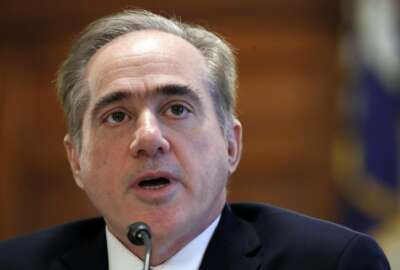
SES bonuses: Merit or T-ball trophies?
How many agencies see how an Office of Personnel Management report can help them improve the way they reward their senior executives.
Remember the imaginary radio-show town where all the children were “above average?” That same description could apply to the federal Senior Executive Service.
But not if you look closely. Skip to the end for why.
As Federal News Radio’s Nicole Ogrysko reported, eight in 10 SESers got performance bonuses in 2016, the latest year for which there is data. That’s from Office of Personnel Management data. The average bonus? $11,928. And get this: At OPM itself, every one of its 38 SESers scored a good-performance bonus. Those averaged $13,999. Looks like OPM deducted the postage.
Agriculture was right up there, with 93 percent of its 337 SESers receiving performance awards — 60 percent of them received the highest ratings.
Now, there’s nothing wrong with good, solid performance bonuses. Real incentives make the world go ’round. Recruitment and retention of SES people and those striving for it has been debated a lot. The Obama administration in 2015 raised the caps on bonuses. Many factors go into retention. Money is a big one. Whether you care to admit or not, a pat on the back without a showing of the green often won’t cut it with people.
But it’s hard to know what to make of the fact that nearly everyone in the SES cohort received a bonus. Here are the some of the possibilities:
- It’s the T-ball equivalent of trophies for everyone
- 80 percent of federal SES people really are that good
- Something is off on the performance evaluation system.
OPM, in its report, stated, agencies “made greater distinctions in SES performance, pay and awards than in the previous year. ” I’m not sure what that sentence even means. They did throw a lot of money at it, though.
At the bottom of the heap, ironically, is the Office of Management and Budget. The president’s career staff. Only half of its 61 SES members received a performance bonus. Those that did only received an average $6,309 — less than half the size of the OPM bonuses.
I found it interesting that NASA, the agency with the consistently highest employee satisfaction scores, only handed bonuses to 57 percent of its 379 SESers. Homeland Security, in the satisfaction basement, thought 87 percent of its 547-strong SES staff deserved a performance bonus.
In truth, it’s impossible to second guess what went on with thousands of individual employee reviews. SES members tend to be high-performing individuals. And, frankly, with salaries averaging in the $160,000 to $170,000 range, they’re not exactly heavily compensated. The question is, how does the bonus pattern map against what might be universally expected in a random population of executives across many sectors?
Who the heck knows. But neither could you confidently predict that SESers ought to fall on a classic bell curve. Forced bell curves artificially deflate people at one end of the bell and inflate those at the other end.
OPM has a lot of math-professor talk in the report about the Pearson correlation coefficient. It’s worth reading repeatedly until you understand it. The agency uses it to “analyze separately the strength of the relationship between executives’ performance ratings and subsequent ratings-based pay adjustments and between ratings and performance awards.”
For instance, Agriculture has a high correlation between ratings and awards, and a low correlation between ratings and pay adjustments. Professor Temin says: “That’s pay banding for you.”
The Labor Department shows near-zero correlation between performance and pay adjustments. That means there’s only a random relationship. Shame on them. But it has near-perfect correlation between performance and SES awards. Meaning its performance raters really do consider performance when giving awards. Ditto for OPM.
In fact, every agency seems indifferent to the tie between raises and performance. They vary a lot in how carefully they tie bonuses and performance. In general, the agencies with the highest bonus correlation also have the highest number of SES members who received awards.
The topline numbers will give fodder to those who like to say the government lards bonuses on long-time bureaucrats yada yada yada. But the real information lies in those Pearson correlation tables, showing that agencies vary greatly in the degree to how closely they tie performance to awards and raises. This is where thoughtful human capital and other executives ought to find guidance for improvement.
Copyright © 2025 Federal News Network. All rights reserved. This website is not intended for users located within the European Economic Area.
Tom Temin is host of the Federal Drive and has been providing insight on federal technology and management issues for more than 30 years.
Follow @tteminWFED






